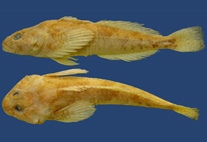Abstract
Since its original description from the Amazonian region, the tick species Amblyomma goeldii Neumann, 1899 has been misidentified with Amblyomma rotundatum Koch, 1844 in different countries of the Neotropical region. Because of this, some authors have considered that the only confirmed records of A. goeldii were from French Guyana. Herein, we reviewed all specimens of A. goeldii that have been deposited at two tick collections in Brazil. In addition, we describe the nymphal stage of A. goeldii for the first time. A total of 10 unpublished records of the adult stage of A. goeldii are recorded from the Amazonian region of Brazil, confirming the occurrence of A. goeldii in this country. Except for one record on the snake Boa constrictor Linnaeus, all records of A. goeldii reported in the present study were from anteaters (Pilosa: Myrmecophagidae). Our results, in conjunction with previous literature records, indicate that anteaters and large snakes are important hosts for the adult stage of A. goeldii. The nymph of A. goeldii is morphologically similar to the nymphs of Amblyomma romitii Tonelli-Rondelli, 1939, Amblyomma dissimile Koch, 1844, and A. rotundatum. We present a modification of a previously published taxonomic key of Amblyomma nymphs from Brazil, in order to perform taxonomic identification of the nymph of A. goeldii based on external morphology. The geographical distribution of A. goeldii appears to be restricted to the Amazonian region. There were no previous host records for the immature stages of A. goeldii, thus it is expected that the present nymphal description will facilitate further works on the ecology of this poorly studied tick species.

